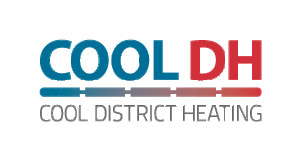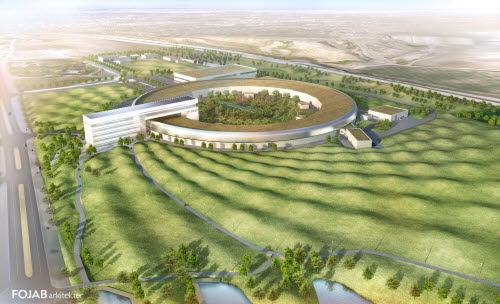A sustainable city and a centre of research
Lund is a fast growing city with close to 120 000 inhabitants. The municipality has a political goal to substantially reduce its environmental and climate impact. During the period 1990–2020 Lund will decrease the total amount of GHG emissions by 50 %, including the emissions from the people living in the city. In 2050 the GHG emissions should be nearly zero. Already in 2014 a decrease of 47 % was obtained compared to 1990.
Lund University is among the top 100 universities in the world with 41 000 students and 7 500 researchers. Lund is also home to the research facilities MAX IV (synchrotron light) and the European Spallation Source, ESS (a new joint European particle accelerator), as well as to the Science Village Scandinavia with 10 000 high level employees.
Innovating low temperature district heating
In Lund there is a high activity to demonstrate the latest solutions in many fields. One such field is to construct the largest LTDH network based on fossil fuel free waste energy. Kraftringen Energi (Lund’s energy and utility company) and its partners develop concepts for energy, mobility and lighting for the infrastructure. The construction will start in 2018 in the district of Brunnshög to become Europe’s largest LTDH facility and test field for LTDH solutions. The total development will cover 100 ha over time. This way, the city can keep growing without increasing the GHG emissions. The biomass presently used in the DH system can be used elsewhere to replace fossil fuels.
Brunnshög
The Brunnshög district is an ambitious project, with the goal to offer the best research and innovation environment in the world and to showcase sustainable urban development. Fully developed in 2050, up to 40 000 people will live and work in Brunnshög. Low-grade surplus heat recovered from the research facilities of ESS and MAX IV will heat the entire district.
Forming a part of Brunnshög is the Science Village Scandinavia. Covering 18 hectares of land between the MAX IV and ESS facilities, the plan is to build approximately 250 000 m2 of gross floor area to provide space for businesses, services, accommodation, leisure, educational facilities, campuses and research in the field of innovation and cutting edge material research etcetera. Local plans allow buildings up to eight floors high. There are several developers aiming to design the buildings for low-temperature heating, which is optimally given the availability of large amounts of low-temperature heat from ESS and MAX IV.
Sources of heat production and temperature levels
As in many Swedish cities, district heating in Lund first was constructed in the 1950’s and now covers most of the city. The production and distribution systems are operated by the Kraftringen company. The main heat production unit is a large scale biofuel based CHP facility. Other important production units are a large-scale geothermal system, a heat pump for recovery of heat from sewage, district cooling heat pumps and other renewable energy sources.
The main source of low-grade heat will come from recycled fossil-free waste heat from the MAX IV research facility. The total cooling demand for MAX IV is 29 MW. In the preliminary design, the cooling is assumed to be split in three temperature levels as shown in the table below. 5 MW at 55/35oC will be used for internal heating at MAX IV. Another part of the waste heat will supply the LTDH system. The aim is to reach at least 5 MW within the time limit of the COOL DH project. The system will be further expanded as the Brunnshög area develops. The residual waste heat will be delivered to the existing DH system in Lund.
During extremely cold winter periods it will be possible to raise the flow temperature in the LTDH to 67 oC for critical buildings. In the building’s substations, shunts will reduce operation temperatures to a minimum and focus on reducing the return temperature. Over time, CWH (high) will be closed down and CWM (medium) return will be raised to 45oC.
The low-grade heat source from cooling water at MAX IV is 6 MW and available for exploitation. The total available source of low-grade heat including ESS will grow to 250 GWh/year by 2025 with a maximum capacity of 40 MW. To utilize the low-grade surplus heat, which is normally lost as cooling in a cooling tower, and supply low temperature district heating for the net in the COOL DH project, it is necessary to develop and install an innovative heat exchanger coupling.




